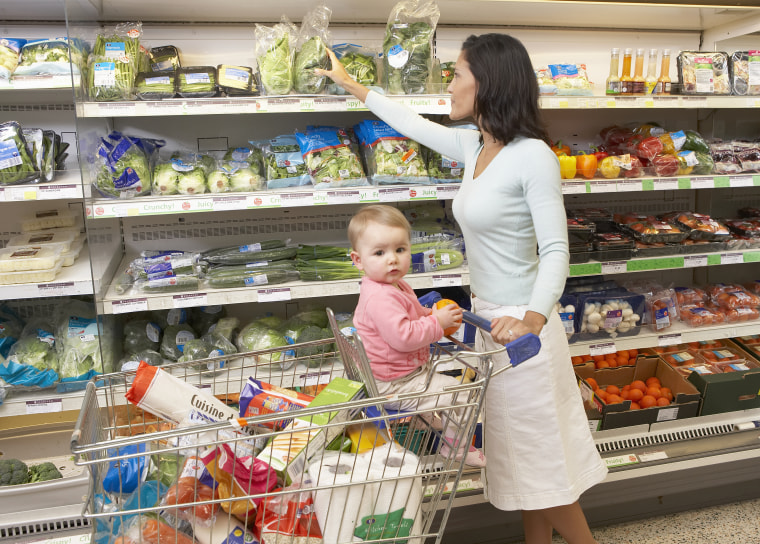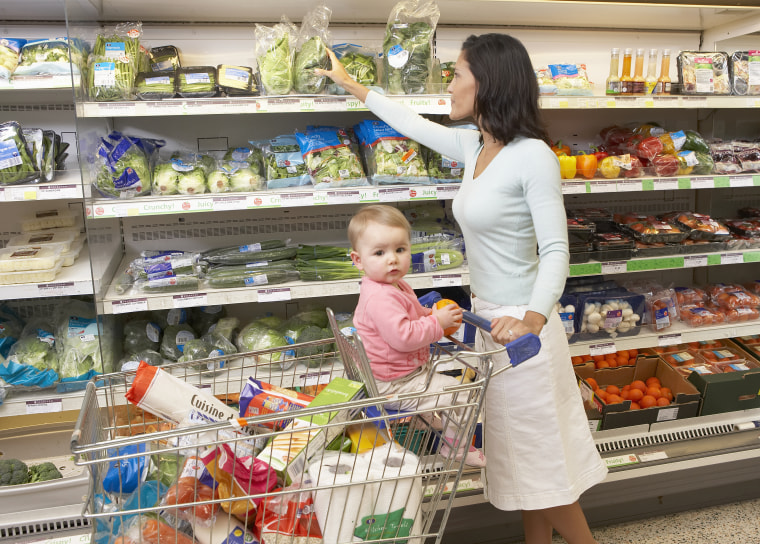Maybe you think you’re not the type to be tricked so easily. Well, think again! The truth is, you might actually be getting duped every time you walk into your local grocery store. It’s time to stop the deception once and for all. Here are the top six front-of-package phrases and foods that have been throwing you off.
Multi-grain products or products “made with whole grains”
The benefits of eating 100 percent whole-grain foods are abundant, including a reduced risk of heart disease and diabetes as well as improved weight control. The unfortunate truth is that even the most savvy shoppers may be buying a product that they think is whole grain, but actually isn't. Enter the multigrain market. The basic definition of a whole grain is a grain that keeps all three of its components (the bran, the germ and the endosperm) intact. When manufacturers strip the bran and germ from the kernel, it no longer provides you with the great benefits that are associated with the entire whole grain. In fact, refined grains can increase your risk of chronic disease by causing intense swings in blood sugar and insulin. The definition of multigrain, however, means that a product has a “multitude” of grains. It does not mean that all the grains are “whole.” That means you may be buying multigrain bread or crackers thinking that they are better for you than they really are.
Your best bet: Choose breads, pastas, cereals and crackers that are labeled 100 percent whole grain or whole wheat. You may also see products with the Whole Grain Council’s 100 percent whole-grain stamp, which are a good choice as well. Finally, stick with grain products that have fewer ingredients.

Dark chocolate
Who doesn't love dark chocolate? Imagine the frenzy on the chocolate market when we found out it was actually good for us! Even those who enjoy it often might experience a reduced risk of heart attack and stroke. This translates to more chocolate for everyone, and without a doubt, more money in the pockets of chocolate manufacturers. Everyone wins, right? Not so fast. To find the truth behind this tricky treat, we’ll need to go straight back to the research. The benefits we’re seeing supported by research are typically assigned to chocolate with a cocoa content of 70 percent or greater. Yet products labeled “dark” chocolate sold in the U.S. can be anywhere from 55 to 64 percent cocoa content. Cocoa, a plant-based food rich in flavonoids, is the star of any chocolate bar. It’s the flavonoids (a type of polyphenol) that are the true link to all the great benefits we enjoy from eating dark chocolate, including a boost in heart health. However, the less cocoa that is in the chocolate (remember what I said about at least 70% cocoa content) and the more cream and milk that’s added, the less effective it becomes for improving health. Further, with all the hoopla about dark chocolate, we tend to forget about the fact that it’s loaded with sugar and saturated fat.
Your best bet: Choose chocolate that has 70 percent or greater cocoa content. And if a product doesn't define the percentage of dark chocolate contained, look it up online. Remember that reaping the benefits of dark chocolate doesn't require eating large amounts either! An ounce and a half a day may be all you need to get the taste you crave with the health benefits you’re looking for.
“Made with all natural ingredients”
I recently encouraged a patient to switch from her processed, “traditional” peanut butter to a more natural version that contained peanuts and nothing else. It turns out that I never should've used the word "natural." The next week, she brought me the "natural" peanut butter she bought at the supermarket. It included the following: peanuts, sugar, palm oil and salt. Natural? Not really. The food industry has been ramping up its "natural" claims for years in an attempt to have consumers think they’re making a healthier choice than they would be with a processed counterpart. Natural, as the example above would suggest, is not always better. Sugar – and all the natural forms it comes in – is still sugar. It’s still a simple carbohydrate that may be partly to blame for our girth and sickness as a nation. Palm oil is not much better, and has been linked to increases in bad (LDL) cholesterol. Further, because the use of the term "natural" is so hard to define, the Food and Drug Administration (FDA) hasn't assigned an official definition to it. The “natural” term will become even more heated as the food industry and federal government attempt to determine if genetically modified organisms (GMOs) will fall into the natural category.
Your best bet: Consume products that are made from whole foods. That often means they include only one ingredient (like peanut butter made with only peanuts).
“No high fructose corn syrup”
Oh, those poor manufacturers of high fructose corn syrup. Had they known that their product would become the devil’s food, they might have gotten into some other sugar business. People, wisely, don’t want to consume high fructose corn syrup (HFCS), and food marketers are cashing in on that with claims that their products “contain NO high fructose corn syrup." The problem is, HFCS isn't the only bad guy on the block, as far as health concerns go. What’s more, the attention on this “bad” food additive has really confused consumers into thinking that all other sugars are just fine. They’re not. A 2014 study found that added sugars increase the risk of death from cardiovascular disease. A 2011 study found that increased sugar in the diet paralleled our rising obesity rates, and a more recent study shows that substituting glucose for fructose in commercial products most likely wouldn't solve our nation's weight troubles and poor disease status. The real problem is over-consumption of any sugar, not a particular type.
Your best bet: If you see a product touting the absence of fructose, ask yourself if the claim is nothing more than smoke and mirrors to hide other sugars.
"Real fruit"
Moms, I’m talking to you. Of all the deceptive claims out there, this is the one that fools most of my mom patients. This preposterous claim doesn't hold much merit once you turn the product around and look at the ingredient list. The problem is, most of us are so seduced by the front of the package that we don’t bother to actually see what’s inside. The “made with real fruit” claim made the news in 2012, when a woman noticed that her strawberry snacks lacked strawberries, and that the only resemblance to fruit in the ingredient list was pear concentrate. She sued a large food manufacturer when she noticed it. The “made with real fruit” is simply another way the food industry is trying to dupe you.
Your best bet: Buy real fruit. This is perhaps the easiest solution of them all! It happens to be in the one place at your grocery store that has no need for labels — the produce aisle.
“Less sodium”
Americans love salt! In fact, we’re dying too early because we love it so much. Under FDA regulations, a product can be labeled "less sodium" or "reduced sodium" if it has 25 percent less than the original version. This doesn't mean it’s low in sodium; it just means it’s less than the original version. Let’s look at a traditional high-sodium food, canned soup. Let’s also assume you’ll most likely eat the entire can in one sitting. In addition to eating the entire can, we’ll assume you have existing hypertension, kidney disease, diabetes, that you’re over 51 or that you’re African American. If you share any of those characteristics, your sodium intake should not exceed 1,500 milligrams a day. Now back to our soup example. A popular brand of chicken noodle soup has 690 milligrams of sodium per serving. You've just eaten the entire can, so now you’re at 1,380 milligrams. You’re almost done for the day when it comes to sodium. Is the lesser sodium version at 1,035 milligrams really much better? If you’re consuming many “lower-sodium” foods, you could be unwittingly increasing, not decreasing, your risk for heart attack and stroke.
Your best bet: Stick with whole foods, eat out infrequently, and if you're going to look at the front of the package, look for the terms “sodium free” or “low sodium” as a better option.
Kristin Kirkpatrick, MS, RD, LD, is a Wellness Manager at the Cleveland Clinic Wellness Institute, and oversees the nutrition component of Cleveland Clinic’s Lifestyle 180 program, which is focused on disease reversal. Read more of Kristin’s advice at ClevelandClinicWellness.com.
